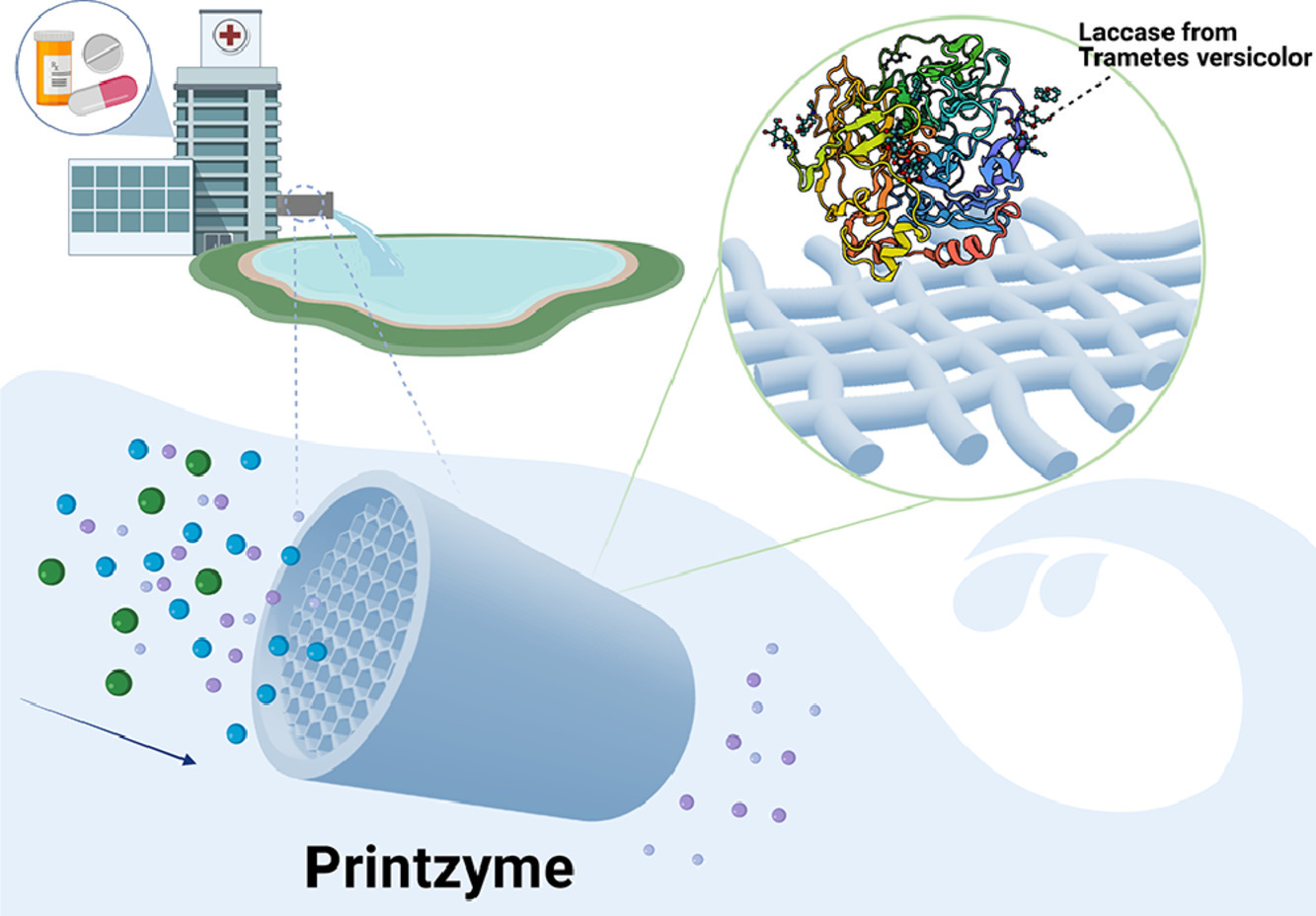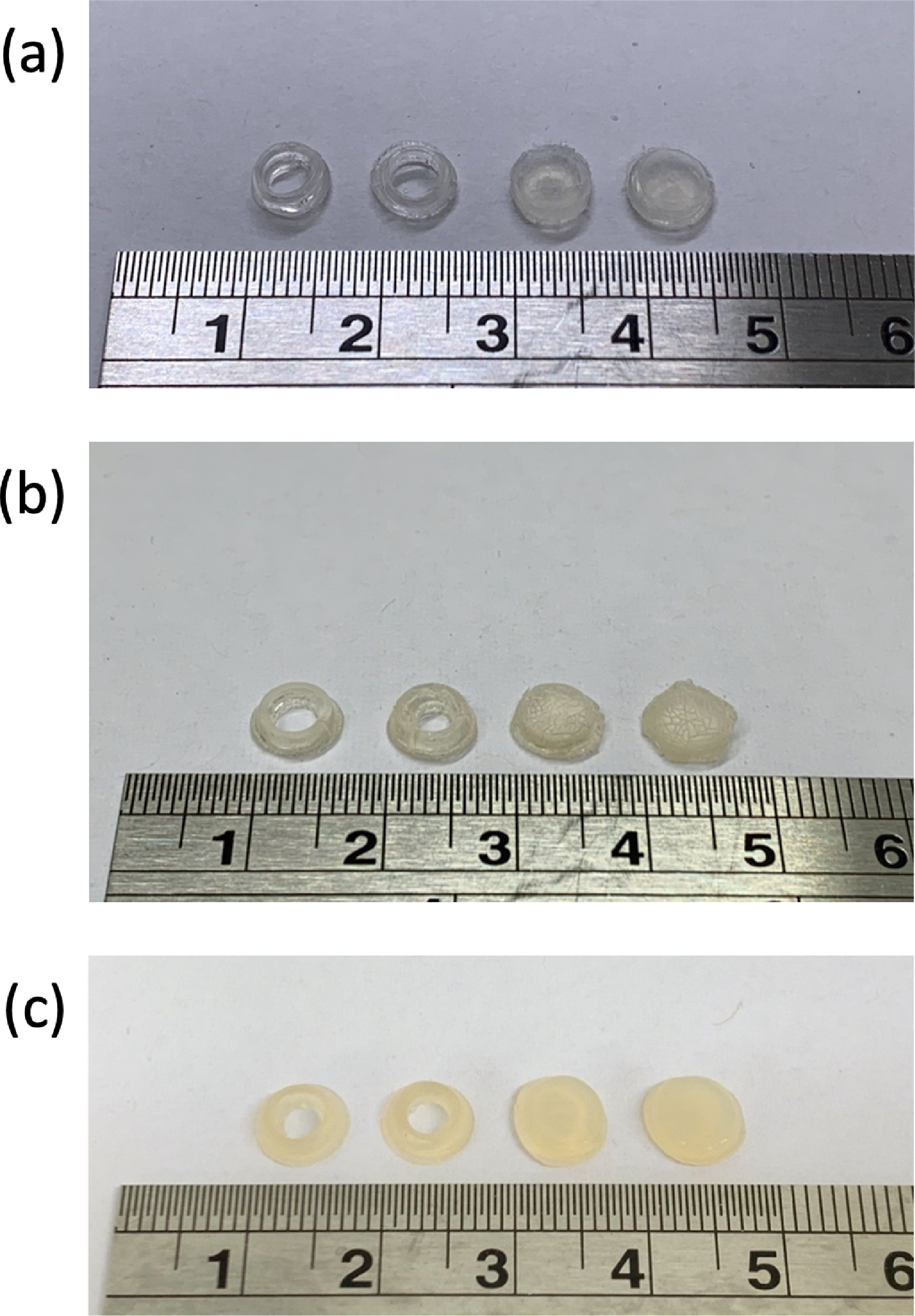Researchers from pharmaceutical 3D printing specialist FabRx, University College London and Universidade de Santiago de Compostela (USC) have developed a novel 3D printed device capable of removing drugs from water.
The infiltration of pharmaceutical drugs into environmental water supplies is a key global issue that can have huge impacts on ecological equilibrium and pose significant risks to human health.
The team’s customizable and reusable biocatalytic device, called Printzyme, is able to remove certain pharmaceutical drugs from water, and could potentially help to tackle the world’s water pollution crisis in the future.

Pharmaceutical 3D printing
FabRx is a UCL spin-out that leverages 3D printing technologies to create personalized medicines and drug delivery devices.
The company has previously worked with UCL and USC to develop personalized 3D printed chewable tablets for children with the rare metabolic disorder maple syrup urine disease (MSUD), and has leveraged 3D printing to fabricate its Printlets with Braille and Moon patterns to aid medicine taking for patients with visual impairments.
Most recently, the three partners worked together to develop 3D printed punctal plugs to combat dry eye disorder. The punctal plugs were loaded with the anti-inflammatory medication dexamethasone and inserted into the tear duct of an eye to block it and prevent liquid drainage.
Now, the team is turning its attention to investigating how 3D printing can help to reduce the harmful pollution of pharmaceutical drugs within our environmental water supplies.

Pharmaceutical water pollution
Nowadays, individuals will take dozens of medicines in their lifetime at increasing rates, especially with advancing age. As more medicines are consumed, more are subsequently excreted or disposed of and eventually find their way into our water systems. In fact, pharmaceutical drugs and their metabolites are reportedly present in nearly all aquatic environments, including drinking water, groundwater, and our oceans.
This pollution is a global issue, with antibiotics, analgesics, lipid-lowering drugs and estrogens the most reported water-polluting drugs worldwide, although the true scale is largely unknown. The infiltration of such pollutants into our water systems poses a significant risk not only to human health but also to ecological equilibrium.
For instance, one of the most prolific drugs entering water, diclofenac, has proven lethal for migratory birds such as vultures, while estrogens in sewage effluents have led to the feminization of male fish which drastically impacts their reproductive success. And it’s not just pharmaceutical drugs that are entering our water systems, but recreational substances like cocaine, opioids and methamphetamines, too.
While the World Health Organization (WHO) has launched a working group to address the infiltration of pharmaceuticals into water, the methods proposed to remove drugs from water so far range in effectiveness. Sludge processes, biofiltration, reverse osmosis, and nanofiltration are just some of the methods put forward, with some offering drug removal rates of lower than 10 percent.
As such, FabRx, UCL, and USC are attempting to address the need for more effective techniques to remove drugs and pollutants from water more simply and cost-effectively via 3D printing.

3D printing the Printzyme
The combined team carried out a study to develop, manufacture, and validate a 3D printed biocatalytic device for the removal of drugs from wastewater at concentrated sources such as hospitals or pharmaceuticals facilities.
The Printzyme device has a fully customizable morphology and uses the natural enzyme laccase as a drug oxidating agent which has been proven to degrade a wide range of pharmaceuticals.
Photopolymer resins were prepared containing laccase, a photoinitiator (LAP), and a mixture of PEGDA and water. The enzyme-loaded resin was then poured into the resin tank of a Formlabs Form 2 SLA 3D printer, from which four different shapes of Printzymes were 3D printed.
The Printzymes were fabricated in one and a half hours before being washed and cured in Formlabs’ Form Wash and Form Cure machines, with more than 50 Printzymes able to be manufactured at the same time in cylindrical and torus shapes.
The Printzymes’ ability to remove drugs from water was tested using two model drugs, diclofenac and ethinylestradiol, which are both on the European water pollution watch list. Separate solutions of the drugs were prepared inside a 100ml flask, within which a Printzyme was deposited and continuously shaken at 100 rpm for 48 hours.
The Printzyme device was found to successfully reduce the concentrations of both drugs within the solutions, removing over 80 percent of dissolved diclofenac within 24 hours, and 95 percent of ethinylestradiol within just two hours.
According to the researchers, the study demonstrates the potential of SLA 3D printing as a streamlined approach to entrap enzymes under mild conditions. The team says the results present a “significantly effective and sustainable” approach to removing pharmaceutical contaminants from water, and show great potential for the further development of bioremediation techniques.
The Printzyme device was also proven to be reusable during the study, and could potentially help to more efficiently tackle the world’s water pollution crisis in a “flexible, easily scalable, and cost-efficient” manner.
Further information on the study can be found in the paper titled: “A customizable 3D printed device for enzymatic removal of drugs in water,” published in the Water Research journal. The study is co-authored by X. Xu, T. Pose-Boirazian, G. Eibes, L. McCoubrey, J. Martinez-Costas, S. Gaisford, A. Goyanes, and A. Basit.
Subscribe to the 3D Printing Industry newsletter for the latest news in additive manufacturing. You can also stay connected by following us on Twitter and liking us on Facebook.
Looking for a career in additive manufacturing? Visit 3D Printing Jobs for a selection of roles in the industry.
Subscribe to our YouTube channel for the latest 3D printing video shorts, reviews and webinar replays.
Featured image shows the researcher’s Printzyme device can remove pharmaceutical drugs from water. Image via the Water Research journal.



